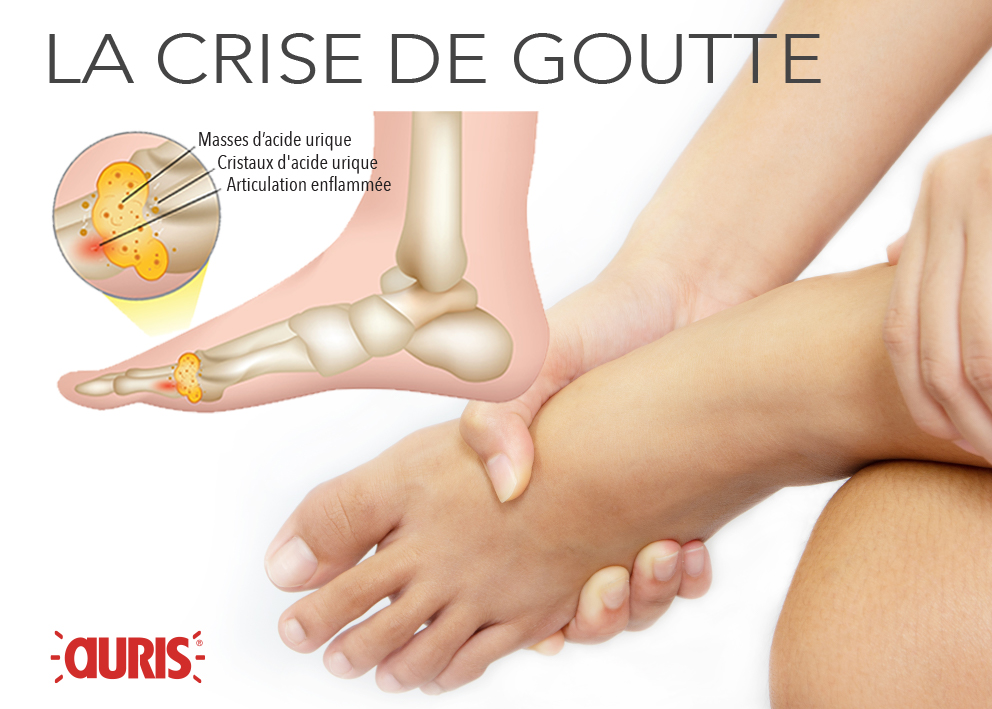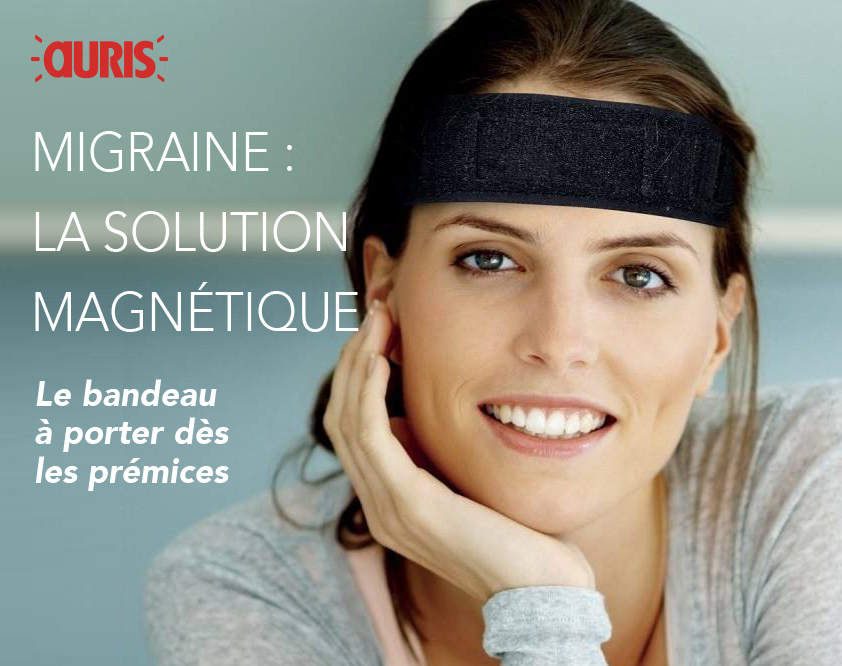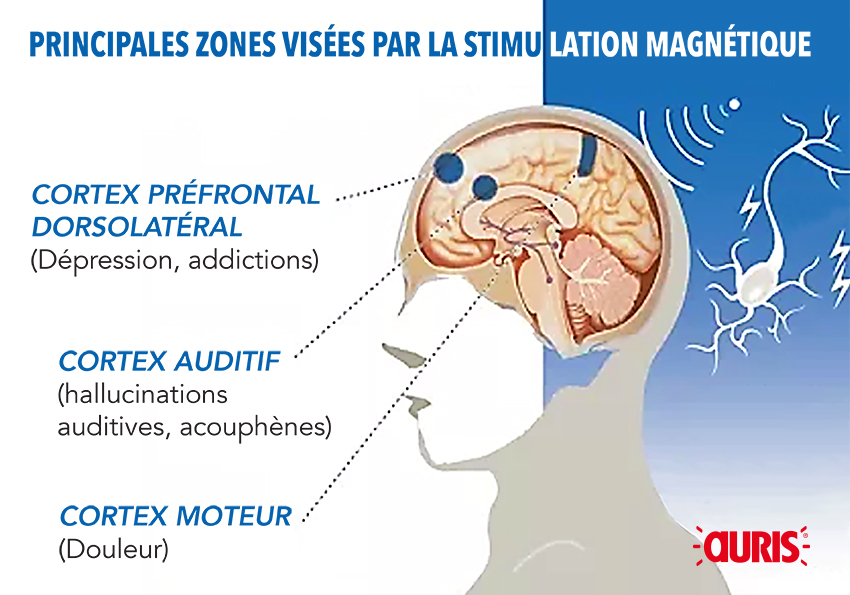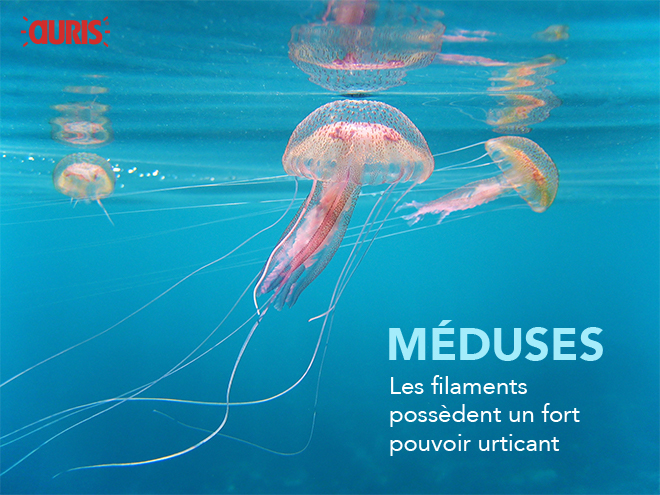Gout attacks: how can uric acid levels be reduced?
Intense pain in the middle of the night in a joint that has become red and swollen, even fever: a gout attack is often sudden and always painful.
This chronic disease is linked to "deposits of uric acid microcrystals in the joints and surrounding tissues". These microcrystal deposits are the result of an excessively high dietary intake of purines. Purines, present in various foods and drinks, are broken down and then eliminated, more or less effectively, by the kidneys. These crystals are then deposited in the joints, causing the inflammation responsible for the attack.
While medication can relieve the pain within a few hours, a change in diet may be enough to reduce the frequency of attacks.
This means reducing your intake of purines, which are found in alcohol, beer and sugary drinks rich in fructose, and in protein-rich foods such as meat (red meat, offal such as sweetbreads, brains and liver, cold meats) and certain fish (anchovies, herring). Seafood, whether shellfish or mussels, is also rich in purines.
Conversely, certain foods help to reduce uric acid levels. Fruits, vegetables and other wholegrain cereals are preferable. Studies have shown that eating cherries reduces the risk of an attack, as does drinking coffee in moderation. Taking vitamin C-based food supplements is also thought to help reduce uric acid levels in the blood. Finally, it is advisable to lose weight, as being overweight increases the risk of an attack. Losing a few kilos can also relieve the strain on joints, which have been badly affected by the disease.
Magnetic therapy can be a valuable aid. Water, especially magnetised water, has a diuretic effect that helps the body to eliminate excess uric acid and other toxins. You can also apply Medimag 11 or 15 mm, always in pairs, around the painful area, which will do wonders to relieve the inflammation.

Migraines: solutions that really work
The well-known solutions:
- Drink water,
- Apply a cold glove to the forehead,
- Apply ice cubes in a cloth,
- Warm the back of the neck to relieve the muscles at the base of the head,
- Use essential oils
- Massage your temples
- Swallow paracetamol with a cup of sweet coffee
- Lose the screens
The magnetic solution that works :
- The Auris magnetic headband, which is highly effective provided you wear it as soon as the migraine begins.

A magnet to treat the brain
Treating disabling neurological or psychiatric illnesses that are resistant to treatment by applying a coil to the patient's head: the principle of repeated transcranial magnetic stimulation (RTMS) sounds almost too simple to believe. And yet the promises of this new treatment option have continued to multiply in recent years.
RTMS was developed in the early 1990s. Its mechanism of action derives from the physical law described by Faraday in 1831: a magnetic field (in this case that created by a coil placed against the head), varying very rapidly, induces an electric field in a conductive element (in this case, the brain). The result is a modulation of neuronal activity, without opening the patient's skull.
Initially developed for research and diagnostic purposes, RTMS has been proving its worth as a therapy for some fifteen years now, particularly in the treatment of depression and chronic pain. These are two completely different approaches that have developed in parallel," explains Jean-Pascal Lefaucheur, one of the experts in this therapy in France (Henri-Mondor Hospital, Créteil). The pioneers of RTMS, Mark George and Alvaro Pascual Leone, realised in the course of their research that higher frequency stimulation could disrupt the mood of healthy subjects. That's how the idea of using it to treat depression came about. In the case of pain, it was the development of implantable cortical stimulators, an effective but invasive technique, that led us to consider the possibility of using RTMS to obtain similar effects, i.e. generating electrical currents in the brain, but without surgery".
The number of research projects into possible new applications continues to grow. Auditory hallucinations, smoking cessation, bulimia, epilepsy, tinnitus and post-traumatic stress are among the avenues being explored by scientists. Pending confirmation of these new indications, experts are questioning the status of this therapy, which is currently used in many French hospitals but still not recognised by the health authorities.
The action of RTMS on the brain using magnetic pulses should be compared with that of very powerful neodymium magnets placed directly on the painful area. This indirectly stimulates the brain by sending endorphins to the electrically disturbed area. Magnetic therapy is making steady progress towards new applications, and we're delighted.

Should you urinate on a jellyfish sting?
With the heat wave, jellyfish are already washing up on the beaches of the Côte d'Azur, and there have never been so many of them on the Var coast. Although the term "sting" is widely used, the term "burn" is more appropriate. Jellyfish do not sting or attack. It is contact with their filaments that can be harmful. They are the ones with the greatest stinging potential. A power that the animal retains whether it is swimming or stranded on a beach.One of the most unsavoury pieces of advice we sometimes hear is to urinate on the burn to soothe the pain and disinfect the wound.
It would seem that this practice works to relieve the pain. But in fact, this is not specific to urine.
It's the heat that neutralises the venom. So you can achieve the same result with seawater, provided it's warm enough. All in all, a less 'restrictive' solution.
In the event of a jellyfish sting, rinse the wound with seawater, then rub it with sand to remove any stinging cells. Rinse again and seek medical advice from a doctor or pharmacist.

